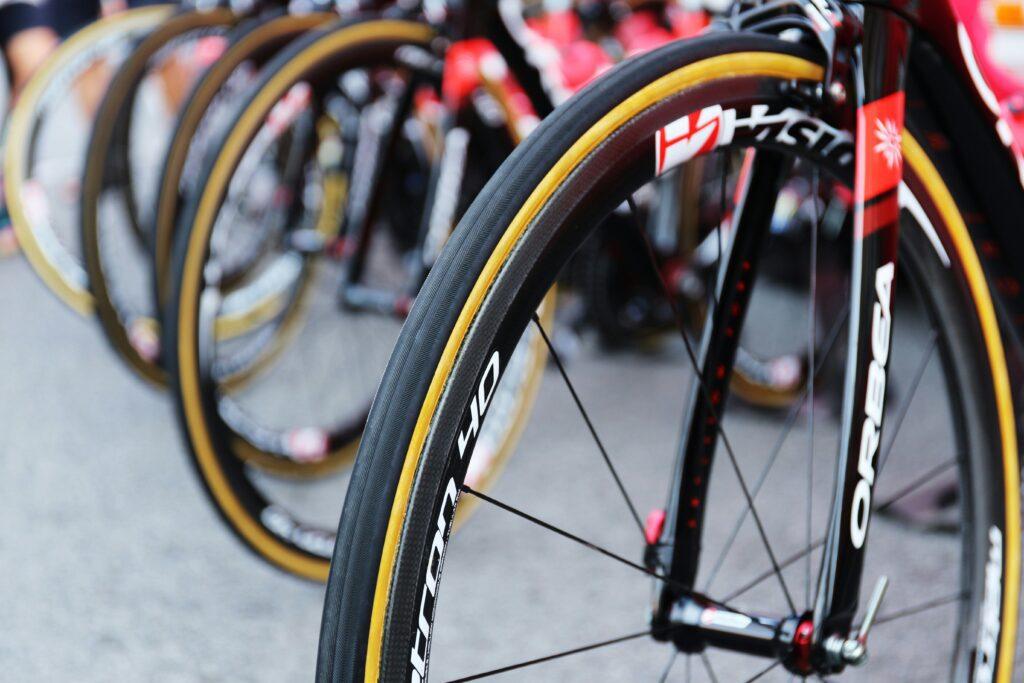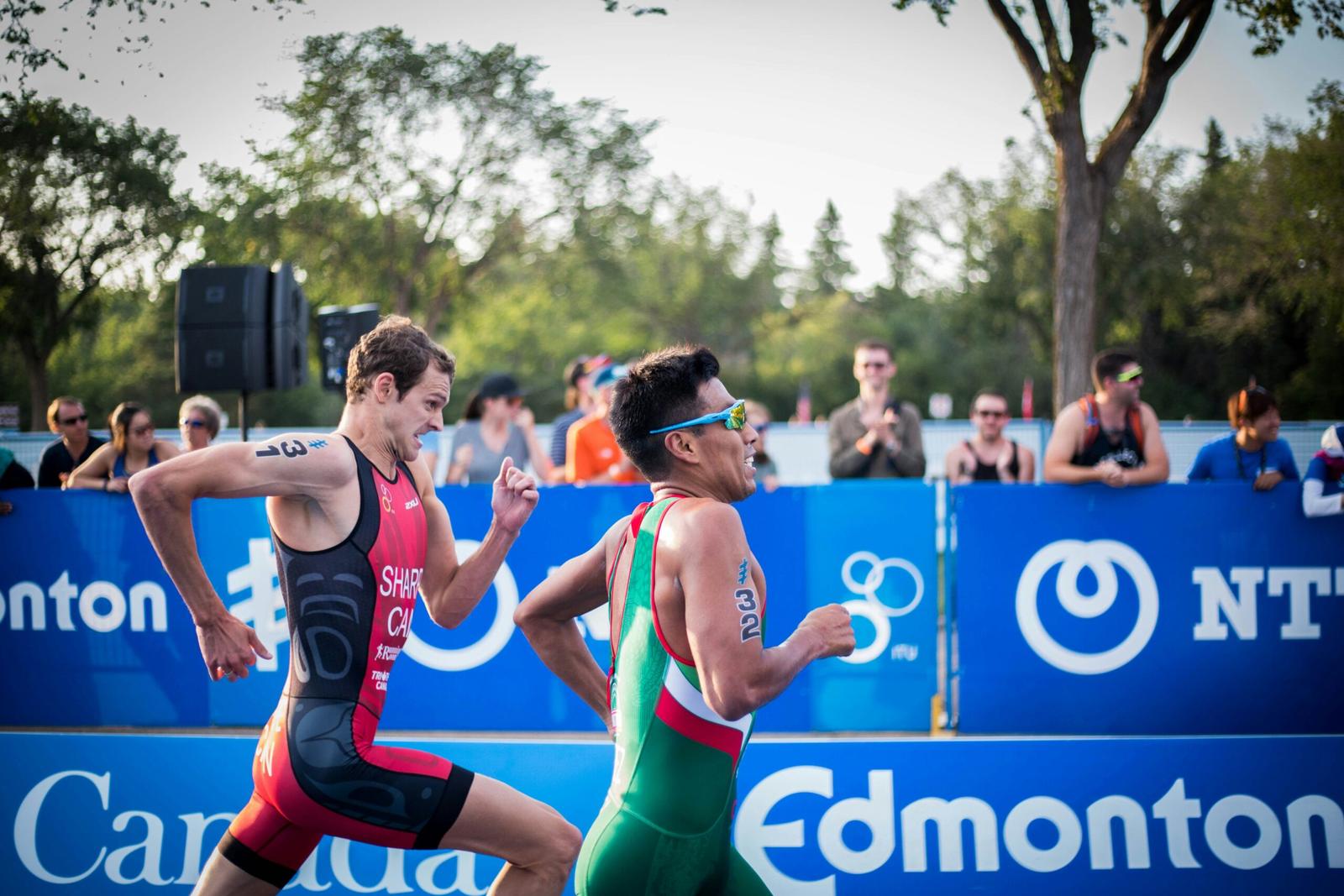Embarking on a journey to train for a triathlon marks the start of an adventure that challenges the body and invigorates the spirit. With this complete guide, you will navigate through the multifaceted aspects of swimming, cycling, and running. Whether you’re setting sights on your first sprint or building up to the heart-pounding intensity of the Ironman World Championship, knowing your training plans, acquiring the right essential gear, and applying expert tips are the keystones to crossing that finish line with confidence and pride.
As you take the first pedal stroke, dive into the waters, and sprint along the track, remember you’re not only training for a race but embarking on a transformative triathlon journey. The right preparation not just shapes your body, but also conditions your mind to overcome every challenge. Step by step, mile by mile, you’ll find yourself becoming part of a community that thrives on endurance, camaraderie, and the pure joy of achievement.
Key Takeaways
- Begin your triathlon journey with a clear understanding of the challenges in each discipline.
- Select a training plan that aligns with your fitness level and sets you up for success.
- Invest in the essential gear to ensure safety and improve performance.
- Seek expert tips to navigate the complexities of triathlon training and race day.
- Embrace the triathlon community for motivation and shared experiences.
- Prepare for not just the race, but for a rewarding long-term athletic endeavor.
Embracing the Triathlon Challenge: Is It Right for You?
Contemplating your first triathlon can feel overwhelming, yet it’s a pursuit that promises a wealth of personal fulfillment and growth. Regardless of your athletic background, this distinctive sport extends its welcoming hands, inviting you to push your limits and discover untapped potential. With the right beginner triathlon tips, even novices can partake in the transformative journey that is triathlon for everyone.
Understanding Triathlon’s Appeal and Accessibility
The surge of excitement as you cross the finish line is not exclusive to elite athletes; it is a sensation available to any dedicated individual. Triathlon distances are designed to cater to a wide array of fitness levels, ensuring that whether you’re looking to start small or dreaming big, there is a starting line waiting for you.
Triathlon Distances: From Sprint to Ironman
Triathlon’s diverse range of distances allows for a customized racing experience, tailored to your personal goals and current fitness level. Here’s a concise view of the triathlon distances to guide your race selection:
| Distance | Swim | Bike | Run | Total Distance |
|---|---|---|---|---|
| Super Sprint | 400m (0.25 mi) | 10km (6.2mi) | 2.5km (1.55mi) | Approx. 13km (8 mi) |
| Sprint | 750m (0.47 mi) | 20km (12.4mi) | 5km (3.1mi) | Approx. 26km (16 mi) |
| Olympic | 1.5km (0.93 mi) | 40km (24.8mi) | 10km (6.2mi) | Approx. 52km (32 mi) |
| Half-Ironman (70.3) | 1.9km (1.2 mi) | 90km (56mi) | 21.1km (13.1mi) | Approx. 113km (70.3 mi) |
| Ironman | 3.8km (2.4 mi) | 180km (112mi) | 42.2km (26.2mi) | Approx. 226km (140.6 mi) |
Assessing Your Readiness to Train for a Triathlon
As you ponder embarking on this journey, it’s essential to assess not just your excitement but your physical readiness. Reflect on what drives you towards this multi-disciplined race — is it the thrill of competition, the allure of total-body fitness, or perhaps a meaningful personal milestone? Determining what motivates you will aid in selecting the right distance and crafting a training regimen that resonates with your aspirations. Ultimately, your diligence and perseverance will pave the way to the starting line, with the community cheering your every stride.
Customizing Your Triathlon Training Plan
Embarking on a triathlon journey demands a personalized approach to maximize your potential and ensure you cross that finish line feeling strong. The key to a successful triathlon training experience lies in crafting a precise training plan, managing your time effectively, and prioritizing injury prevention strategies. A tailored training schedule isn’t just a blueprint for what you aim to achieve; it’s the cornerstone of your triathlon preparation, ensuring you’re physically and mentally ready for race day. Remember, every swim, bike, and run session brings you a step closer to achieving your triathlon goals.
Setting Realistic Goals
With your sights set on the finish line, it’s vital to lay out a series of achievable goals that steer your training direction. These goals are essential for success when you train for a triathlon. Whether it’s completing your first Olympic distance, setting a personal best, or aiming for that Ironman finish, each milestone reflects progression in your triathlon training. To maximize the effectiveness of your goal-setting while you train for a triathlon, ensure your objectives are SMART: Specific, Measurable, Achievable, Relevant, and Time-bound. This approach facilitates a manageable and motivational pathway to triathlon success.
Developing Discipline in Training Schedules
 Consistency is the heart of your triathlon regimen. Your training schedules should harmoniously fit your daily life, ensuring that swim, bike, and run sessions are regular and structured. Crafting a routine that respects your personal and professional commitments will help maintain motivation and avoid burnout. Remember, managing your time effectively will allow for essential recovery, contributing to overall athletic improvement.
Consistency is the heart of your triathlon regimen. Your training schedules should harmoniously fit your daily life, ensuring that swim, bike, and run sessions are regular and structured. Crafting a routine that respects your personal and professional commitments will help maintain motivation and avoid burnout. Remember, managing your time effectively will allow for essential recovery, contributing to overall athletic improvement.
Incorporating Rest Days and Injury Prevention Strategies
In the pursuit of triathlon triumph, training for a triathlon demands a strategic approach. To maximize results and stay injury-free, rest days are your ally. They provide your muscles with the respite needed to repair and grow stronger. Incorporate rest days, cross-training, and strategic practices like stretching, strength training, and using proper gear to minimize the risk of overuse injuries. This holistic approach will help you maintain consistent training progress as you prepare for your triathlon. Listen to your body and respond with care; it’s the most valuable asset you have on this adventure.
To optimize your training for a triathlon, consider these key areas:
- Training Plan: Maintain a balanced approach, alternating between swim, bike, and run workouts.
- Time Management: Prioritize your sessions and adapt your triathlon training to fit your lifestyle.
- Rest Days: Schedule at least one full rest day per week to allow for optimal recuperation.
- Injury Prevention: Include flexibility and strength exercises to build a resilient body and reduce the risk of injuries while you train for a triathlon.
- Training Schedules: Keep track of your progress and adjust your plan as needed to consistently reach your goals.
Your endeavor is a profound testament to your dedication. With a robust training plan, disciplined schedule execution, and mindful recovery practices, you’re not just training for a triathlon; you’re fortifying a lifestyle of athletic excellence. Unleash your potential, and let each stroke, pedal, and stride bring you closer to those exhilarating triathlon dreams!
Train for a Triathlon: Mastering the Swim
Approaching the open water segment of your triathlon can be intimidating, especially when you’re training for a triathlon and facing the challenges of unpredictable conditions. But don’t worry! With focused swimming workouts and a strategy tailored to open water swimming, you can master this initial leg with both confidence and efficiency.
First, embrace the variety of swimming workouts necessary for long-distance events. This is even more crucial if you’re aiming to conquer the Ironman swim distance while you train for a triathlon. Building endurance in the pool is a vital step, but remember, the unpredictability of open waters demands more than just laps. Here are some key workout elements to focus on when you train for a triathlon:
- Breath control and bilateral breathing: Mastering these techniques will improve oxygen intake and reduce fatigue.
- Water navigation and sighting techniques: Essential for staying on course in open water environments.
- Pacing strategies to conserve energy: Key for long-distance swims, ensuring you have energy for the other disciplines.
- Adapting stroke techniques to various water conditions: Learn to adjust your form for choppy water, currents, and other factors.
These skills transition seamlessly from the pool to open water swimming, where they culminate in a symphony of efficiency and speed while you train for a triathlon. Consider joining a local swimming group or enrolling in clinics specifically designed for triathletes. This can provide practical experience in a range of aquatic environments, further bolstering your open water readiness as you prepare for your triathlon.

Here’s a sample table outlining a basic week of swim training for an Ironman triathlon:
| Day | Workout Focus | Sample Activity |
|---|---|---|
| Monday | Endurance | 2000m straight swim with focus on consistent pacing |
| Wednesday | Technique | Drills for stroke refinement and breathing efficiency |
| Friday | Speed | Intervals such as 10 x 100m with rest, aiming for goal race pace |
| Sunday | Open Water | Distance swim in open water to simulate race conditions |
Fine-tuning your approach to the unique demands of the Ironman swim distance becomes much easier when you consistently engage in targeted workouts. As race day draws closer, these sessions will not only build your physical stamina but also embolden your mental fortitude for the aquatic challenges that await. Remember, consistent practice and incremental improvements are your allies on the path to triathlon success.
Cycling Workouts: Gaining Speed and Endurance
Embarking on the cycling segment to train for a triathlon, you face a multifaceted journey, characterized not just by distance, but by the skillful management of speed and endurance. Optimizing your performance on two wheels is crucial, as cycling commands a significant portion of the Ironman challenge. Before diving into the transformative realm of cycling workouts, it’s imperative to address the bedrock of your ride: the gear. Your selection in this department serves as the linchpin for race-day execution.
Choosing the Right Gear for Cycling Success
Your bike and its components should be tailored to your body and the specific demands of triathlon racing. Comfort, aerodynamics, and reliability come into play when picking out your steed and its accompanying accoutrements. Remember, this isn’t just about having top-tier technology; it’s about what enhances your individual performance. From the seamless shift of gears to the snug fit of a cycling shoe, every piece contributes to a frictionless ride, priming you for a triumphant transition onto the run.
Structured Training for Efficient Performance
When it comes to cycling workouts, variety is more than just the spice of life—it’s the blueprint for progress. Your training should oscillate between long distance voyages that build stamina and shorter, high-intensity sessions that foster speed. By replicating race conditions, you acclimate your body to the rigor and rhythm of competition. Interspersing these with transition practice, or ‘brick sessions’, ensures that when you leap from the saddle to sprint to the finish, your legs are ready to carry you forward without missing a beat. Dedicate yourself to a conscientious preparation routine, and your cycling phase will not just be about enduring the race, but dominating it.
FAQ Section
Q: I’m a beginner. Can I still train for a triathlon?
A: Absolutely! Triathlons offer a range of distances, from sprint to Ironman, making them accessible to athletes of all levels. Start with a shorter distance and gradually increase as your fitness and confidence grow.
Q: How much time should I dedicate to training for a triathlon?
A: The amount of training time depends on your chosen distance and fitness level. However, even beginners can expect to dedicate several hours per week to training. A structured training plan will help you optimize your time.
Q: Do I need specialized gear for a triathlon?
A: While some specialized gear can improve your performance, the basics are essential. You’ll need a swimsuit, bike, helmet, running shoes, and comfortable athletic wear. As you become more involved, you might consider investing in triathlon-specific gear like a wetsuit or cycling shoes.
Q: How do I make sure I’m eating correctly to train for a triathlon?
A: Your training demands proper nutrition. Focus on a balanced diet that emphasizes complex carbohydrates for energy, lean protein for muscle repair, and healthy fats. Don’t forget to replenish fluids with water and electrolytes throughout the day.
Q: What are some common triathlon injuries and how can I avoid them?
A: Overuse injuries are common in triathlon due to the repetitive nature of the sports. Incorporate rest days, cross-training, and proper form into your training regimen. Strength training and stretching can also help prevent injuries.
Conclusion
Your triathlon journey is a testament to the unwavering power of the human spirit. Every training session, every transition, and every stride toward the finish line reflects a deep-rooted dedication to self-improvement and the pursuit of extraordinary goals. While the road may not always be smooth, the lessons learned and the strength gained will shape you far beyond the realms of swimming, cycling, and running. Remember, you’re not just training for a triathlon; you’re forging a lifelong love of athleticism.








